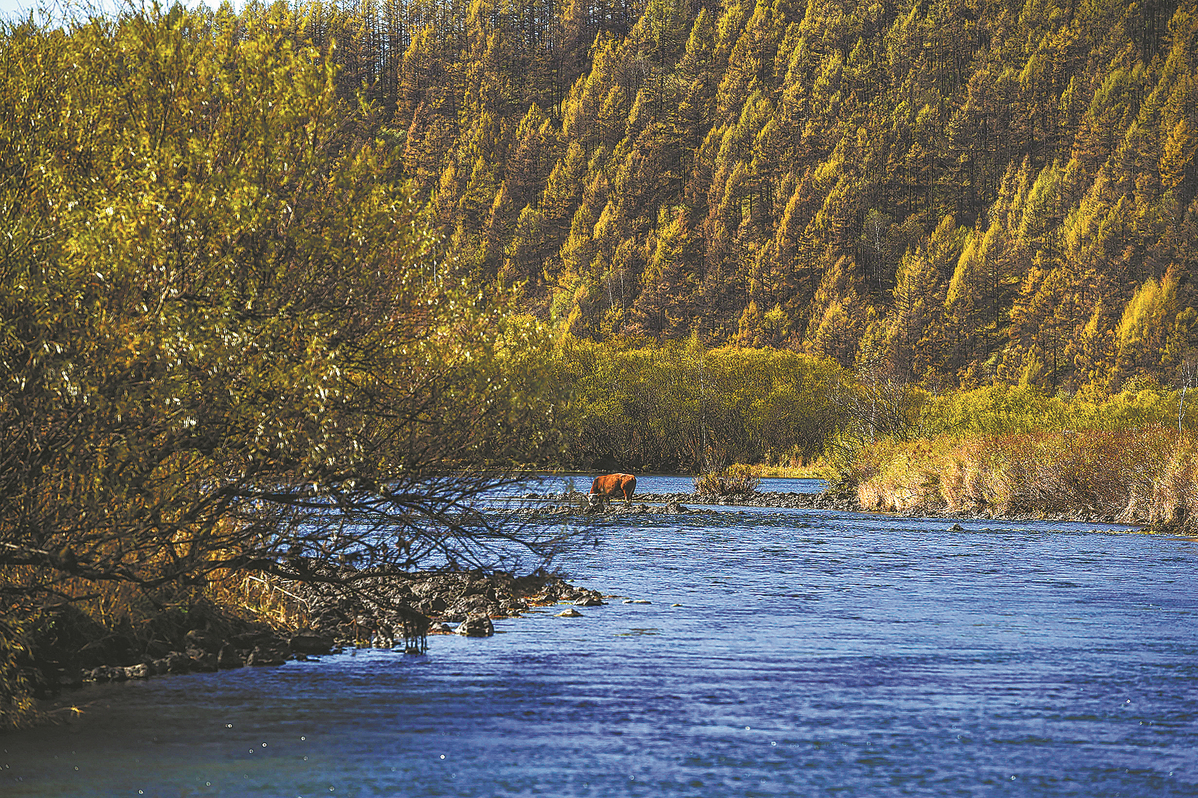Ecoprotection efforts boost Inner Mongolia


Cleaner environment
In an area near Ulan Suhai Lake, Liu Xiuzhen, a farmer in Sainhudag village, Urad Front Banner, usually does her morning exercises to the rhythm of music or takes a walk with other village women.
"The air is good," said the 51-year-old, whose house has been renovated with new furniture and pot plants. A few years ago, though, the environment was not so livable.
"The environment around the lake has improved a lot, so we decided to renovate the house. Years ago, the environment was so bad that we wanted to move away," she said.
According to Liu, the lake water was once brown and smelly. "Now, the water is clear, and there are more fish and birds. Swan geese, which had not appeared here for decades, were seen overwintering at the lake last year," she said.
The change is largely the result of the treatment of pollution on farmland around the lake. For years, the excessive use of fertilizers was a key factor in lake pollution.
"We manage the farmland on our own, but the environment belongs to everyone. We must protect our farmland," Liu said.
On her farm, she changed her crop from corn to wheat and used farmyard manure and artificial weeding, but no plastic film, in response to government measures to reduce agricultural pollution.
She receives government subsidies for the adjustments, and her wheat has been recognized as a pollution-free product, which sells at a higher price than ordinary wheat.
With all of these changes, Liu's income rose by 40,000 yuan last year. She said she hoped green products will be further promoted so more farmers around the lake area will adopt the environmentally friendly farming model.
Intensive reform measures have also delivered tangible outcomes in other places that were once badly polluted.
At the foot of the Helan Mountain section in Alshaa, a prefecture-level area, the vegetation is lush, with a few rock sheep occasionally running by. Locals say that snow leopards — a rarity in the area — have also been spotted recently.
Poor protection efforts during decades of coal mining, as well as overgrazing in the mountainous area, led to environmental degradation. Since 2016, local authorities have shut down 57 coal-washing plants and 67 mine shafts, while launching vegetation cultivation in mining areas.
"The environmental protection measures at Helan Mountain are good. Compared with 20 years ago, the edge of the forest has moved forward by 5 to 10 meters," said Li Dong, an official with the administration of the Inner Mongolia Helan Mountain Nature Reserve.
Last year, the proportion of days with good air in Inner Mongolia was 3.7 percentage points above that in 2015, while the proportion of sections of surface water with good water quality under national assessment was 22.9 percentage points higher than in 2016, according to official data.
























